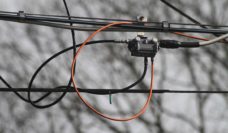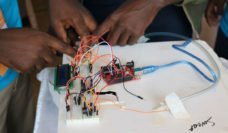In school, Samantha was always afraid of being called on in class even when she knew the answers. Her hands would get clammy and her heart would pound. She skips class frequently, sits in the back of the classroom and avoids participation in lectures and presentations. She wants to go to class, learn the material, and interact with her peers but is afraid her instructor and peers won’t think she is smart enough.
Social anxiety is characterized by intense fear and avoidance social situations because we fear we are being judged. Socially anxious individuals tend to exhibit physical symptoms like trembling, sweating, and fidgeting when they perceive a social interaction as threatening. High social anxiety often results in severe avoidance of social interactions that interferes with work, school, and personal life. In addition to the immediate effects on quality of life, the experience of social anxiety has been shown to undermine educational achievement, predict significantly lower earned wages and workplace productivity, and be associated with taking more days off of work.
Traditional psychological research to understand social anxiety has fallen short, relying on laboratory-based methods that don’t capture the in-the-moment, real-life experience of individuals with social anxiety. Exciting recent advances in sensing technology have made it possible to monitor how activities and social behaviors unfold in natural social settings. Social patterns can be monitored using sensors embedded in personal smartphones and other devices.
Our team at the University of Virginia was interested in understanding how social anxiety symptoms manifest in the ‘wild.’ Our collaboration between engineers and psychologists aimed to discover how socially anxious individuals’ fine-grained behaviors manifest as their daily life unfolds. We analyzed data that is constantly being gathered by sensors embedded in our cell phones (see figure below). Accelerometers, light sensors, global positioning system (GPS), and other programs track our internet search history, the places we go, the people with whom we interact, just to name a few. These sensors are increasingly used to understand health. For example, accelerometers can tell us how active a person is in a given day by measuring how many steps an individual took, how many flights of stairs they climbed, or if they missed their morning run.
Sensors embedded in smartphones (image courtesy of the author)
Apps like Google Maps and Waze already use this data to suggest the most efficient routes to our destinations. We repurposed this data to understand and predict mental health states. In this study, we leveraged location data as captured from GPS sensors to extract meaningful patterns that enhance our understanding of behaviors of socially anxious individuals. We set out to answer the following questions: Does an individual regularly visit the same locations during specific hours? Are they visiting their friends? Are they socially isolating themselves?
We recruited 228 undergraduate university student participants with varying social anxiety levels. Students were recruited through email advertisements and an undergraduate study participant pool. We decided to focus on university students for two reasons: (1) high social anxiety levels among young adults are well-documented, and (2) recruiting young adults in a university setting provides a relatively homogeneous sample in terms of life phase, psychological stressors, and life experiences, thereby eliminating a wide variety of potential confounding factors.
Traditional psychological research to understand social anxiety has fallen short, relying on laboratory-based methods that don’t capture the in-the-moment, real-life experience of individuals with social anxiety.
We installed a custom mobile app for studying human behavior in natural settings (Sensus) on participants’ personal IOS or Android phones. The app collected GPS location data from participants continuously and uploaded them to a cloud for analysis.
After the 2-week study was complete, we used advanced computational techniques and OpenStreetMap (OSM) geodatabase to translate GPS coordinates into meaningful classes of locations such as home, coffee shop, supermarket, friend’s house. From these labels, we computed how long an individual participant stayed in each location, how their time was distributed at each location, how often they moved between locations, and the diversity of locations. We then used these mobility metrics to predict an individual’s social anxiety using a neural network.
We found that, by combining passively sensed location data with advance computational methods, it is possible to accurately predict an individual’s social anxiety levels. We integrated semantic labels indicating different types of locations (where we relax, exercise, socialize, study, or work) into prediction models to provide a nuanced picture of the behavioral patterns of socially anxious individuals. Consistent with the existing theory and psychological research, we found that socially anxious students avoided locations that contain a threat of social evaluation, such as restaurants, bars, or dormitory common rooms. They also engaged in fewer leisure activities during evenings and weekends than students with low social anxiety.
These study results demonstrate the potential utility of leveraging mobility patterns to understand how social anxiety symptoms manifest in real-life situations. Future research will need to look at how this and other sensor data can be used to develop interventions for people who experience high social stress. This is the first work to demonstrate the connection between fine-grained behaviors as measured by smartphone sensors and social anxiety disorder.
Acknowledgements
The study was supported by the Hobby Postdoctoral and Predoctoral Fellowships in Computational Science and the National Institutes of Health’s National Institute of Mental Health (MH113752).
Photo by inbal marilli on Unsplash















